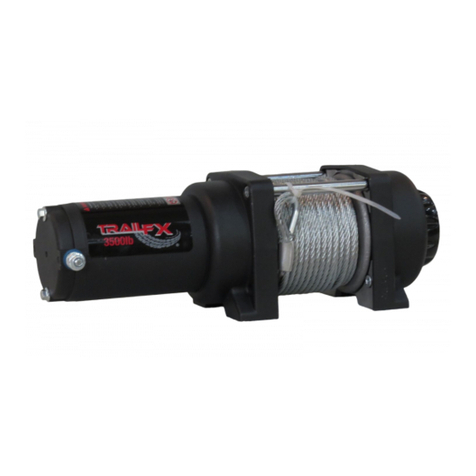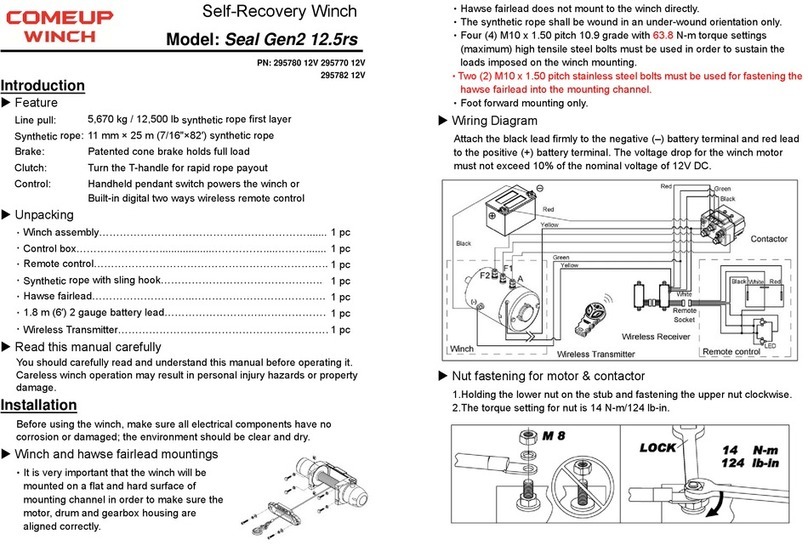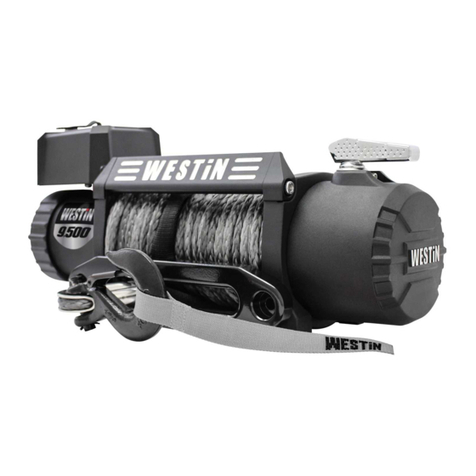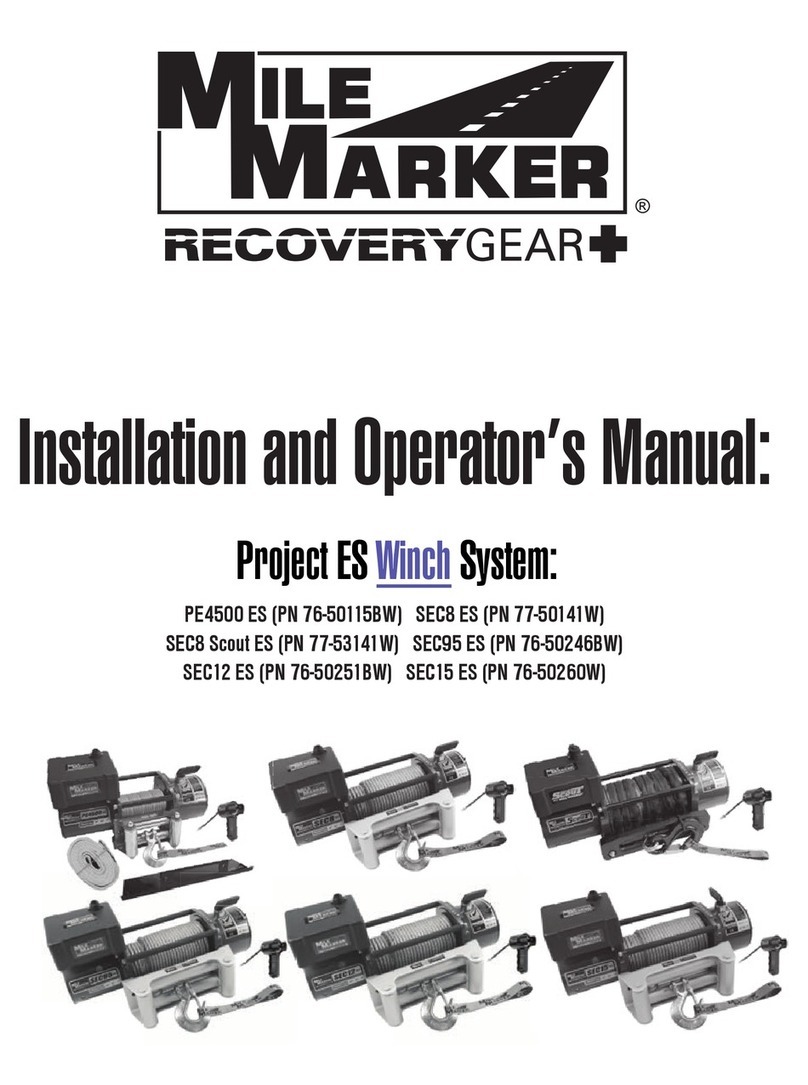Good F850 Stealth Series Original instructions

Good
®
Automatic Windlass, Inc.
Made in the U.S.A.
Owner’s Manual
&
Installation Instructions
for Models
F850 Stealth Series
Automatic, Free-Drop, Rope/Chain Combination Anchor Windlasses
F850 Stealth Series
Serial No.__________
Good
®
Automatic Windlass, Inc.
357 Route 72 ~ Barnegat, New Jersey 08005
Ph: 609-698-4402 800-780-4655 Fax: 609-698-3698
Web Site: www.goodwindlass.com

Good®Automatic Windlass, Inc.
357 Route 72 ~ Barnegat, New Jersey 08005
Manufacturer’s Warranty
Manufacturer warrants to the original purchaser, subject to the Limitations and Exceptions described
herein, its’ new manufactured products and parts to be free from defects in material and workmanship under
normal use and service for a period of three (3) years from the date of the original purchase, or installation
date, except that the warranty shall be for a period of (2) years on sprockets, bearings, and clutches, and
one (1) year on seals, motors, electrical/electronic equipment and controls.
Manufacturer’s obligation under this warranty shall be limited to repairing or replacing, at Manufacturer’s
factory or other designated places, each part or parts which shall be returned to the Manufacturer’s plant or
Manufacturer’s designee, transportation charges prepaid and which examination shall disclose to have
been thus defective while in the warranty period. This warranty or agreement to repair or replace does not
cover any labor charges for removal, re-installation or any work done by any other party or parties except
Manufacturer or it’s specific designee. This warranty is expressly in lieu of all other warranties and
representations expressed or implied and all other obligations and liabilities of any kind or character on
Manufacturer’s part. Manufacturer neither assumes nor authorizes any other person to assume for it any
other liability in connection with the sale or use of Manufacturer’s Marine Products and/or spare parts,
and/or other products.
This warranty applies only if the product is used in NON-COMMERICAL applications, and has not been
repaired or altered by anyone outside of the Manufacturer’s factory, or Manufacturer’s authorized designee,
in any way, so as in Manufacturer’s sole judgement to affect structure, stability, performance, or reliability.
This warranty shall not apply to misuse, negligence, faulty installation, incorrect maintenance, accident, or
use in applications for which they are not intended; nor to any product sold by Manufacturer which shall
have been loaded or used beyond the factory rated load capacity, including but not limited to, wear and
tear, corrosion, paint fading, chipping, or ultraviolet degradation.
Manufacturer reserves the right to change any of the assemblies, specifications, or prices of its products
without incurring any responsibility with regard to any such assemblies or specifications previously sold or
replaced. This policy does not provide replacement of products in instances where adjustments will correct
the difficulty. Complete replacement of Good Products is not authorized, and therefore can only be replaced
at the discretion of “Good”. Copies of bill of sale, receipts are to be submitted at the time of the inspection
documenting that the defect or failure occurred within the applicable warranty period. Examination by Good
must concur that the product or part failed as a result of material and/or workmanship.
GOOD AUTOMATIC WINDLASS, INC. SHALL NOT BE LIABLE FOR INCIDENTAL, CONSEQUENTIAL
OR PUNITIVE DAMAGES TO PROPERTY OR PERSONS ARISING OUT OF OR FROM THE USE OF
GOOD’S PRODUCTS BY THE BUYER OR BUYERS, ITS ASSIGNES, EMPLOYEES, AGENTS OR
CUSTOMERS. THIS WARRANTY DOES NOT APPLY TO LOSS OF THE VESEL/BOAT/PROPERTY OR
EQUIPMENT, LOSS OF TIME, LOSS OF USE, INCONVENIENCE, OR OTHER INCIDENTAL OR
CONSEQUENTIAL DAMAGES. THIS WARRANTY GIVES YOU SPECIFIC LEGAL RIGHTS WHICH VARY
FROM STATE TO STATE, OR COUNTRY TO COUNTRY.
WARRANTY RETURN PROCEDURES: If a windlass or part does not operate properly and the steps
suggested on “Information and Trouble Shooting Sheet” (and/or a phone call to our customer service
department) does not provide a solution, we recommend prompt removal of the unit and return to “Good” for
warranty inspection service. DO NOT OPEN or TAMPER with the windlass or part, as this will void your
warranty. Please include your name, daytime phone number, and return shipping address with your return
and note on the shipping carton and any paperwork “WARRANTY REPAIR/INSPECTION”.
Please Record the following information and retain for your records:
Windlass Model F850__________ Serial # _______________ Date ____________
Purchase Date ______________ Warranty Registration Date _______________

1
Table of Contents
Introduction Page 1
Package Contents, Tools Required Page 2
Planning the Installation Page 2
Deck Installation Instructions Page 3
Wiring Instructions Page 4
Wiring Schematic/Diagram Page 5
Initial Installation of Rope/Chain Page 6
Operating Instructions Page 7 & 8
Windlass Maintenance Page 8
Notes Page 9
Inserts
1-Installation Hole Template
1-Warranty Registration Card
PLEASE, Read Carefully Before Proceeding!
THANK YOU!
For choosing Good®as your first mate for anchoring!
Good
®
Automatic Windlass, Inc. has been manufacturing anchor windlasses since 1958 and from the
Barnegat, New Jersey location since 1971. The company pioneered and patented the free-drop design of the
Good®automatic anchor windlass for the pleasure boat industry. You can rest assured that your satisfaction is
of primary importance to everyone at Good Automatic Windlass. Before beginning the installation or having
your windlass professionally installed, please take the time to review the simplified instructions pertaining to the
installation of your anchor windlass. This will make you more aware of the critical requirements necessary to
achieve proper operation and the most satisfaction from your Good®automatic anchor windlass.
Be sure that your windlass rope/chain entry hole is located over the deepest area of the anchor
storage locker. Select the correct length of line that your locker can comfortably hold, (DO NOT try to store
more than your locker can hold; see the storage locker minimum requirement charts on page 2). Trying to store
too much line could possibly cause problems, such as slipping or jamming when lowering or raising the anchor.
These 2 REQUIREMENTS ARE VERY CRITICAL FOR THE PROPER OPERATION OF YOUR ANCHOR
WINDLASS.
Please be aware of other manufactured anchor lines. Over the last 30 years, we have developed our own
method of yacht lay construction in the manufacture of our anchor line kits. Don’t be confused by other brands
that state they are the same as Good®line, or may be identified as windlass line. Good®anchor line kits are
clearly marked and easily identified. They are pre-spliced with a standard 10’ lead of 5/16 BBB chain, dye
colored for depth, and pre-shrunk. All Good®anchor line kits come with initial windlass feed instructions and the
200’, 300’ and 600’ lengths include a dashboard depth chart for easy reference while deploying your anchor.
When purchasing the F850 Stealth free-wheeling anchor windlass, we do NOT recommend the use of more
than 20’ of chain on your anchor rode. If you require a longer chain lead or an all chain anchor rode, the free-
drop mechanism may be dismantled by removing the two (2) ¼” diameter release pins and springs from the
clutch cover on the top of the windlass. This will disable the clutch from dis-engaging the rope-chain sprocket
wheel; thus, making the machine operate at 75-85 fpm, up or down by the speed of the motor’s rotation.
Phone: (609) 698-4402, (800) 780-4655, Fax: (609) 698-3698, or E-mail: support@goodwindlass.com
Again, THANK YOU for choosing Good®and we wish you many Happy and Safe boating hours with your
Good®Automatic Anchor Windlass. PLEASE BOAT SMART!
www.goodwindlass.com

2
Please Read All Instructions Before Beginning Installation.
Package Contents
Above Deck Windlass Assembly
Below Deck Motor & Gear Box Assembly Motor Reversing Control Panel
Safe-T-Loc. Switch & Plate Assembly Stainless Steel Mounting studs, washers & nuts
Manual Reset Circuit Breaker & Plate Installation Instructions, Template, Deck Gasket &
Warranty Registration
Note: If there are any shortages or questions please contact the factory or consult a professional marine
equipment installer before proceeding.
Tools Required
Electric Drill (3/8”-1/2” Chuck) 3-1/8” Diameter Hole Saw
11/32” Diameter Drill Bit Soldering Iron with solder
Stripping/Crimping Pliers 3/8” through 9/16” open end wrenches
#2 Phillips screwdriver Rasp files (Round or Half-Round)
Marine Grade Silicone Sealer Small tube of grease
PLANNING THE INSTALLATION
Windlass Location Restrictions
•The 850 Stealth series is designed to install easily on boats
with a deck thickness of up to 4 inches. If your deck’s
application is more than 4 inches thick call the factory. It
may be necessary to return the unit for a shaft and mount
extension option.
•The rear of the windlass must be located a minimum of 1”
forward of the anchor locker bulkhead. (see Fig.1)
Determining the Optimum Windlass Location
•
Locate the windlass within 1” of a level plane with the
anchor roller system. (see fig.2) Contour, deck spacer plates
are available from the factory.
•Locate the windlass on the centerline of the boat’s bow, over
the deepest area of the anchor rode storage locker.
•The locker depth will determine the amount of anchor line
that can be used in your windlass application. (see Fig.2)
•Locate the rope chain entry hole as close to the deepest
area of the rode locker as possible.
•Keep in mind that you need to keep the rear of the windlass
1” forward of the anchor locker bulkhead.
1” MIN.
BULKHEAD
FIG. 1
WINDLASS
FIG. 2
1” MIN.
DEPTH
ROPE LOCKER MIN.
DIMENSIONS
1/2 x 200’ 15”L x 17”D
1/2 x 300’ 15”L x 24”D
9/16 x 200’ 15”L x 24”D
9/16 x 300’ 16”L x 34”D

3
850 STEALTH SERIES DECK INSTALLATION INSTRUCTIONS
•Locate and mark the centerline of the boat’s bow for the installation.
•Align the bow centerline on the paper template with your marks on the centerline of the bow. ( over the
deepest part of the anchor line locker) Fasten the template with tape at this location.
•Carefully transfer the center points of the (2) two 3-1/8” holes and the (4) four 11/32” mounting holes.
•Remove the paper template and drill the (4) four 11/32” deck mounting holes.
•Then, using a 3-1/8” hole saw, carefully drill the two 3-1/8” holes as marked on the template.
•On decks thicker than 4”, the rope/chain entry hole may need to be angled on the underside, front edge
of the hole as shown on the paper template. Use a rasp file to do so.
•De-burr all rough edges; leaving no splinters or obstructions in the Rope/Chain entry hole. It is
recommended to seal or gelcoat all through holes in the deck to prevent water intrusion.
•If mounted on a pulpit, make sure there is no void between the pulpit and the deck.
If there is a void, this must be filled, especially in the Rope/Chain entry hole.
•The windlass will accommodate deck/pulpit thickness up to (4) four inches. An optional shaft extension
is available for combined deck/pulpit thickness of up to 7-1/2” inches per request from the factory.
•Install the 5/16” stainless steel studs into the base of the windlass and test fit your hole locations.
•If correct, remove windlass, peel paper backing off of the deck gasket and adhere gasket to the base of
the anchor windlass.
•Apply a small bead of silicone on the deck around all machined holes and re-install the windlass.
•On thinner decks ( less than 1” ), it is recommended to install a deck stiffener below the windlass to
support the load when raising anchor. This stiffener MUST NOT obstruct the rope/chain entry hole.
•Install the (4) four 5/16” flat washers and hex nuts on the 5/16” windlass studs to fasten the anchor
windlass to the deck.
•Apply a thin film of grease on the windlass shaft and gearbox mount face prior to installing the gear box
and motor assembly.
•Align the keyways on the windlass shaft and gearbox and slide the gearbox onto the windlass shaft.
•Mount the gearbox with the motor pointing towards the starboard (right) side of the bow (Factory
recommended positioning). DO NOT mount with motor pointing towards bow, this will interfere with
rope/chain entry hole and could cause possible motor damage and/or failure.
•Tighten all (4) four 7/16” nuts, making sure to use the lock washers (supplied) to prevent the gear box
motor assembly from vibrating loose.
•Your deck installation is now complete and you should now begin wiring the windlass.

4
ROPE/CHAIN COMBINATION WIRING INSTRUCTIONS
Safe-T-Loc Switch Location
Install your windlass control switch in a safe, accessible location. The factory recommends
locating it near the throttle and transmission controls at your helm. This assures complete control
of the boat during anchoring. All Good®windlasses are supplied with a Safe-T-Loc toggle switch
and mounting plate. Pulling out the toggle handle, then pushing the handle to either the Raise or
Lower position operates this switch. The Safe-T-Loc will prevent an inadvertent start up of the
windlass if the switch is bumped accidentally.
If incorporating deck switches (not supplied), isolate the power to them as a safety precaution.
When multiple switches are used, wire them in parallel. If, after wiring your switches, your
windlass runs in the opposite direction as indicated at the switch location, reverse your leads R & L
as illustrated in the wiring diagram (see page 5). While raising or lowering the anchor with the
windlass, keep your engines running until anchoring is complete and a safe hold is secured, or the
anchor is completely retrieved and stowed in the pulpit or roller system.
Motor Reversing Control Panel Location
The motor reversing control panel should be located in a safe, dry location. The manufacturer
recommends mounting with the connecting bolts horizontal or pointing up. The control must not
be mounted with the connecting bolts pointing downward. The control is sealed however the
panel should be protected from direct moisture contact. It is also recommended to choose a
location that can be easily accessed in the future if needed.
Wiring Your Windlass (See Wiring Diagram/Schematic)
It is very important to use the proper gauge wire as illustrated in the wiring diagram. The main
positive (+) power cable and negative (-) ground cable must be 6 gauge minimum for a one way
run of up to 40’, 4 gauge for a one way run over 50’. The supply leads from the reversing control
to the motor should be 6 gauge. The switch wires, from the toggle switch to the reversing control
panel, are to be 14 gauge.
Wire the main positive power cable from terminal B on the reversing control either directly to the
battery or to the battery selector switch, if possible. Install the 60 amp (manual reset) circuit
breaker in-line, in a dry location protected from moisture and the outside elements. This breaker
will protect the positive power cable at the power source. Connect the main ground (negative)
cable from the 50 amp, automatic reset circuit breaker directly to the negative terminal on the
marine battery. Do not forget to install a 6-gauge jumper ground wire from terminal C on the motor
reversing control to the opposite pole of the 50 amp, automatic reset circuit breaker. Crimp, solder
and seal all of your main power and ground connections to assure good electrical contact.
The switch wires are to be 14 gauge. Connect the switch to the motor reversing control via the
spade connections on the top of the control. Be sure to connect the N (neutral) center spade
terminal to the 50 amp negative circuit breaker. You may gain power for the switch from any 5 to
10 amp fused, power source at your bridge or helm station. It is recommended to solder, seal or
liquid tape all terminals and wire connections. This will ensure good electrical contact and reduce
the possibility of corrosion at the connections and in the wire itself.
Note: Be sure to secure/clamp all wiring with nylon ties to prevent excessive strain
on the electrical connections and components.

5
Wiring Diagram/Schematic
F850 Stealth Series
D.C. system
DC88-276 or 1061P Reversing Control with Permanent Magnet Motor
Motor Reversing Control
Terminal A = Motor (+) Positive Terminal C = Main Ground (-) Negative
Terminal B = Main Power (+) Positive Terminal D = Motor (-) Negative (Ground)
Gauge Wire From To
#6 Red Marine Battery (+) Positive Battery Selector Switch
#6 Red Battery Selector Switch 60 Amp Manual Reset Circuit Breaker
#6 Red 60 Amp Manual Reset Circuit Breaker Terminal “B” on Motor Reversing Control
#6 Red Terminal “A” on Motor Reversing Control Motor Stud (+) Positive
#6 Black Marine Battery (-) Negative Terminal “C” on Motor Reversing Control
#6 Black Terminal “D” on Motor Reversing Control Motor Stud (-) Negative
#14 Lower “L” Terminal on Motor Reversing Control Top Screw on Safe-T-Loc Switch
#14 Raise “R” Terminal on Motor Reversing Control Bottom Screw on Safe-T-Loc Switch
#14 Negative “N” Terminal on Motor Reversing Control Terminal “C” on Motor Reversing Control
#14 Switch Pos. Center Screw on Safe-T-Loc Switch Any Auxillary 5-10 Amp Fused Power Source
D
B
rev. 11/15
Motor
NEG.
POS.
GOOD
WINDLASS
Key
#6 Wire
#14 Wire
Gear Box
Lower
Raise
Safe-T-Loc
Switch
Red (+)
Raise
Positive
Negative
60 AMP
Manual
Reset
Circuit
Breaker
Battery
Selector
Switch
ON
Lower
L
NEG.
N
R
(-)
(+)
Marine Battery
Motor
Reversing
Control
MOTOR
D
POS.
NEG.
BATTERY
NEG.
OFF
C
60
AMP
rev. 8/15
POS.
NOTE:
Supply Power to
switch from any
5-10 amp fused
source
A
B

6
Initial Rope/Chain Feed Into Windlass (850 Stealth Series)
•The windlass accommodates Goodcolor-coded line of the proper diameter with 5/16” BBB
ACCOanchor chain.
•This should be purchased with your windlass to ensure proper operation.
•Once the windlass is installed, you are ready for initial loading of the anchor rode into the
anchor windlass. The factory recommends installing the line into the windlass directly from the
dock in front of the boat (see installation below).
Installation of the Line & Chain
•At the bow of the boat, using a broom handle as an axle, spin the chain and line off the reel
onto the dock or foredeck of your boat. Do Not remove the rope over the sides of the reel!
•Pass the bitter end through the anchor roller and/or pulpit. Wrap the bitter end of the line
around the rope/chain gypsy while holding the tension finger out. Be Careful! Do Not activate
the windlass at this time! Be sure your fingers and hands are clear before operating windlass.
•With the anchor line in position, release the tension finger allowing the tension finger to engage
the line in the rope/chain gypsy.
•Be sure that the tension finger is engaging the anchor line before operating the windlass.
•Operate the raise switch and power in approximately 10 to 15 feet of anchor line.
•Go below and secure the end of your anchor line. This should be tied off in the locker or to a
block of wood on the end of the line. This can prevent the loss of your entire line and anchor.
•Once the line is secured, activate the raise switch and retrieve all but the last 15 feet of your
line and chain. Attach the anchor to the chain lead, a swivel shackle may be used.
•Complete the retrieval of the anchor rode. A safety line to your anchor may be considered.
•You are now ready to anchor your boat automatically with your GoodAutomatic Rope/Chain
Windlass.

7
Operating a Good
Automatic 850 Stealth Rope/Chain Combination Windlass
When preparing to anchor your boat, there are four very important factors to consider:
•The sea conditions, tide or currents
•The winds
•The sea bottom type
•The depth of water
These factors will determine the amount of scope required to hold the anchor in the sea floor. Anchor line
scope is a term that refers to the amount of line or rode required to allow the anchor shank to remain
horizontal to the sea floor and allow the anchor flutes to remain embedded in the bottom; thus securing the
anchor’s hold. A simple rule of thumb determining the line scope required is:
•Minimum 3 feet of line for every foot of waters depth (3 to 1)
•Normal line scope is 5 feet of line for every foot of waters depth (5 to 1)
•Optimum line scope is 7 feet of line for every foot of waters depth (7 to 1)
Anchoring with the Free-Wheeling F850 Stealth Windlass
When you are ready to anchor your boat with your free-drop windlass follow these steps:
•Put the bow of your boat into the wind or tide and pick your spot to anchor.
•Run slowly over your chosen location and disengage your transmissions (props).
•While the boat is still, activate the windlass lower switch.
•When lowering anchor, pay close attention that the anchor leaves the bow roller system.
If it does not, the windlass may jam the chain. (Chain will not push!)
•The windlass will power out 3 to 5 feet of rode; then, the automatic internal free fall clutch
will disengage from the gypsy. When the anchor and rode begin to free fall to the sea
floor briefly put the boat in reverse to start a reverse drift, then put transmissions back
into neutral. This will prevent the anchor chain from fouling the anchor flukes.
•Once the anchor is on bottom and you have achieved the proper amount of scope you
must stop the backward drift of the boat with your transmissions.
•Then activate your windlass switch in the raise position and power in 5 to 10 feet of line.
•This re-engages the drive clutch into the gypsy, securing the line in the windlass.
•Let the boat back drift to set the anchor.
•In most normal sea and wind conditions, no further cleating is required.
•It is always recommended to keep your boat engines running at idle during anchoring and
until the anchor is set and hold is checked and secured.

8
Raising Anchor with the F850 Stealth Series
When you are ready to raise your anchor follow these steps:
•Start the boat’s engines, check your crew, passengers and view the surrounding
area for other boats, swimmers, etc.
•Line up the bow of the boat with your anchor and anchor line.
•First, activate the lower switch and allow a foot or two of line out to release the
stress and tension formed in the line in the sprocket while at anchor. Then,
activate the raise switch and begin retrieving the line and anchor.
•It is recommended to occasionally idle forward as you are retrieving the anchor
line to assist the windlass motor. The factory does not recommend pulling the
boat through the water solely with the windlass motor.
•Most times the windlass will break the anchor out of the bottom by itself. If the
unit stalls (circuit breaker trip), while breaking bottom and directly over the anchor,
wait a few seconds for the breaker to reset itself automatically and let the surge of
the boat break the anchor free from the bottom.
•Once it is free from bottom, continue to retrieve the remaining anchor rode.
•Carefully jog the anchor into stow in your pulpit or roller system, allowing the
anchor to cradle into stow. Do Not over-tighten the anchor into stow!
•You may attach a safety line to your anchor as a safety precaution if desired.
While operating and anchoring your boat always use common sense, stay calm, do
not rush & always practice boating safety.
BOAT SMART!
Windlass Maintenance for the F850 Stealth Series
•Before beginning anchor windlass maintenance, be sure to shut off/isolate all
power to the anchor windlass.
•It is recommended to wash down the above deck windlass assembly with fresh
water after returning from sea. This will help prevent oxidation from occurring
from salty seawater.
•The below deck gearbox and motor assembly is a sealed unit and should require
little or no maintenance. Keep the motor terminals clean to ensure good contact.
•Make sure all electrical connections are kept clean and free of corrosion from
moisture. These should be inspected periodically.
•Run the windlass whenever possible in order to circulate the oil in the gearbox
and keep the mechanical parts moving freely.
•The above deck windlass assembly requires little or no attention. The spring
loaded tension finger may require a spray or liquid lubricant occasionally or when
lack of movement is detected. This can be done every other month.
•It is very important to pay close attention to the joint where the anchor line is
spliced to the anchor chain. This area must be inspected regularly and
maintained to ensure proper operation and complete safety while at anchor.
•If fraying or any loose ends appear at the splice, re-splice your anchor line to the
chain with a four tuck locking back splice or contact the factory for splice
maintenance.
Thank you for anchoring with GoodAutomatic Anchor Windlass and we wish you
many years of safe boating and trouble free anchoring.

9
NOTES
_______________________________________
_______________________________________
_______________________________________
_______________________________________
_______________________________________
_______________________________________
_______________________________________
_______________________________________
_______________________________________
_______________________________________
_______________________________________
_______________________________________
_______________________________________
_______________________________________
_______________________________________
_______________________________________
_______________________________________
_______________________________________
_______________________________________
_______________________________________
_______________________________________
_______________________________________
Customer Service Toll-Free (800) 780-4655
www.goodwindlass.com

Good
®
Automatic Windlass, Inc.
357 Route 72 ~ Barnegat, New Jersey 08005
Phone: 609-698-4402 800-780-4655 Fax: 609-698-3698
e-mail: [email protected]
www.goodwindlass.com
Rev. 01/17
Popular Winch manuals by other brands

Huchez
Huchez PRIMO INOX BT 250 instruction manual
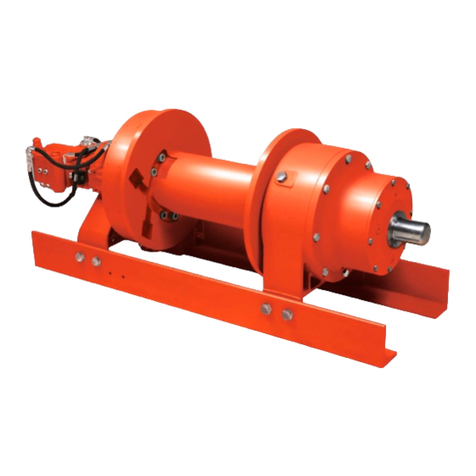
Dover
Dover TWG Tulsa RUFNEK 80 DESIGN 001 Series Service manual
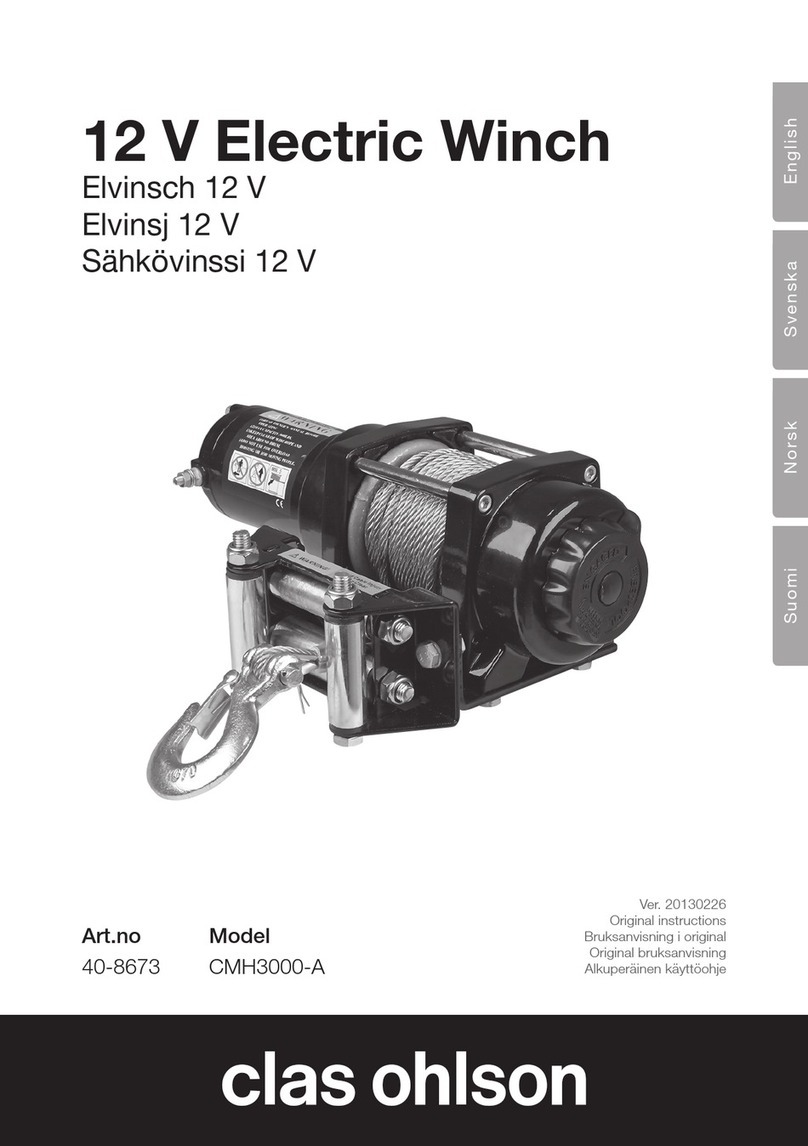
Clas Ohlson
Clas Ohlson CMH3000-A Original instructions
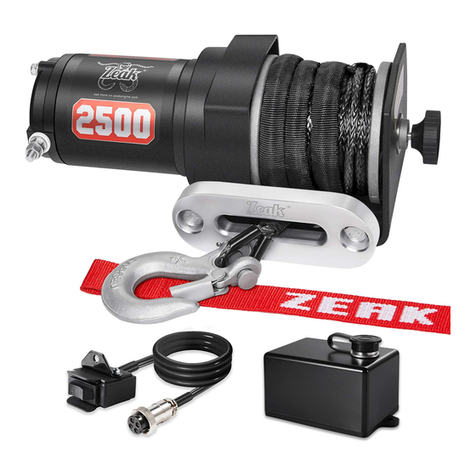
ZEAK
ZEAK 2500LB manual

Champion Power Equipment
Champion Power Equipment SUP2500 Assembly & operating instructions

Champion Power Equipment
Champion Power Equipment 11051 Owner's manual & operating instructions
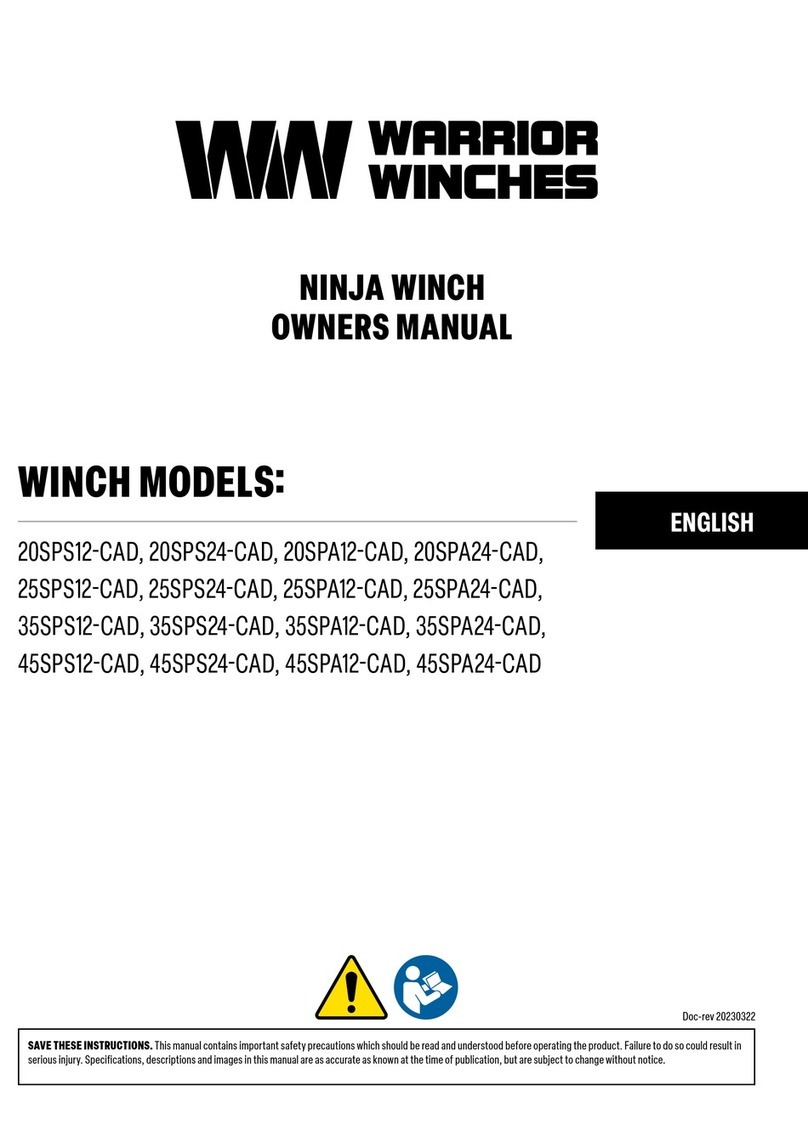
Warrior Winches
Warrior Winches NINJA 20SPS12-CAD owner's manual
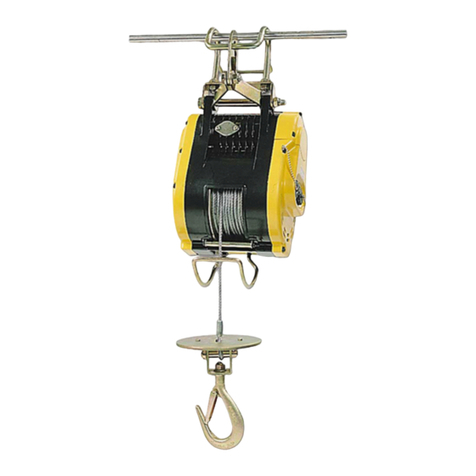
Comeup
Comeup CWS-160 manual
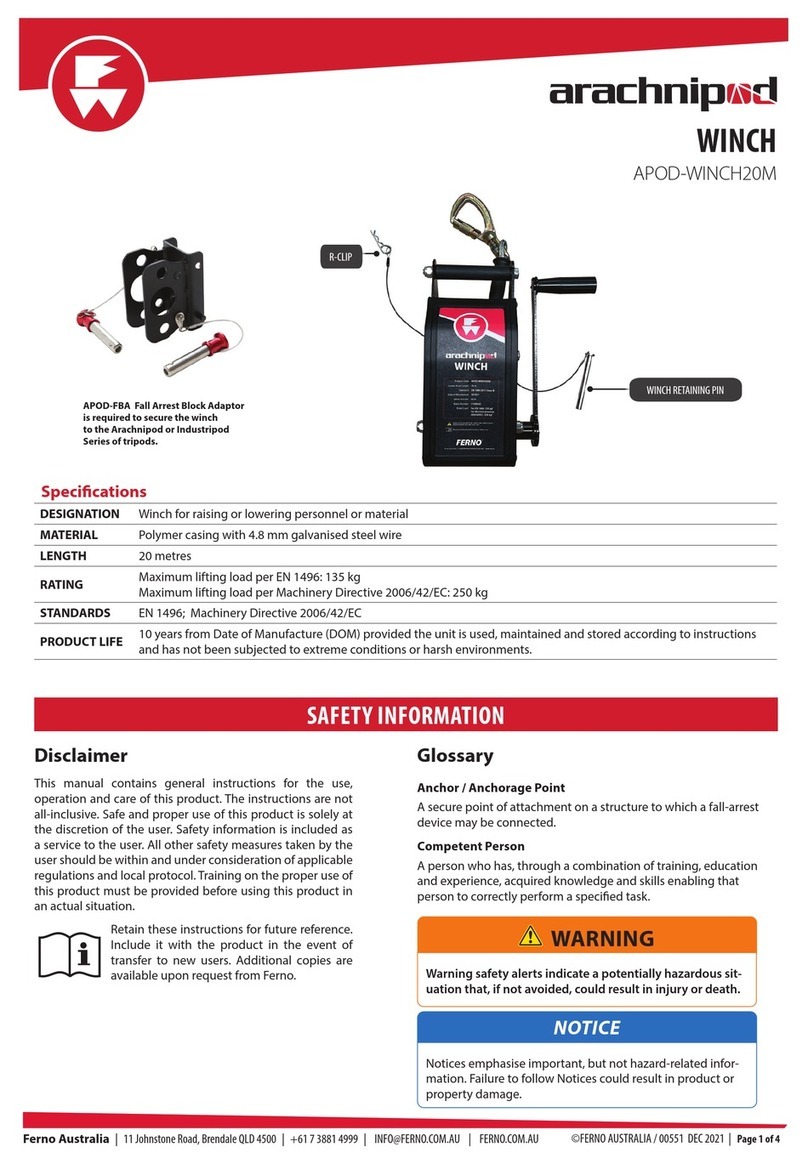
Ferno
Ferno Arachnipod APOD-WINCH20M manual

Cycle Country
Cycle Country 25-1200 Assembly & owners manual
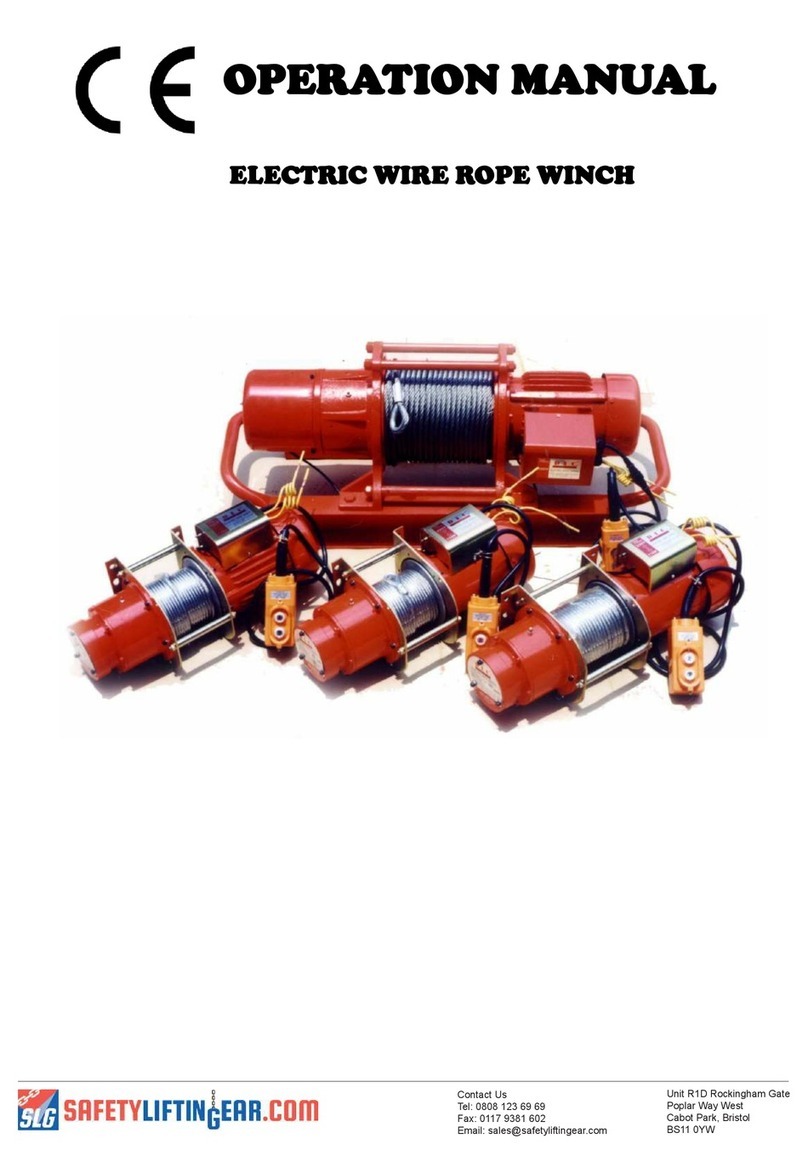
SLG
SLG DUKE DU-201 Operation manual

TRAC
TRAC T10211-fw Big Water Lakeside Installation and operating instructions
